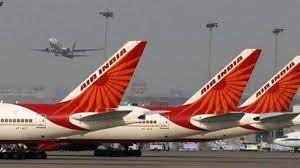INTRODUCTION
In this amid lockdown worldwide because of the spread of covid-19, it has become difficult for the common mass to communicate or to return to their place. Many Indians who are living overseas wanted to return back to the country and hence our central government started the evacuation of thousands of Indians who were stuck abroad.
SALIENT FEATURES OF THE AIRCRAFT (PUBLIC HEALTH) RULES.
The Aircraft (public health) rules, 1954 and the draft of 2015 and 2017 were enacted to discuss and highlight the different responsibilities that the government, health officers at the airport has. It also highlights about the responsibilities and duties of a pilot-in-command and the requirements of any aircraft that is arriving or leaving India or even within operating within India has to complete and also the steps and measures that has to be taken by the airport officers, staffs and others during the spread of quarantinable disease and also to look after the safety of the passengers who are affected by the pandemic.
- Prior to arrival, travelers show data with respect to sickness or death on board and any health assessments on board; and on arrival, an appropriately filled and marked Aircraft Public Declaration according to the endorsed structure in the Aircraft PH Rules.
- An airplane in travel would stay limited to a specific zone of the air terminal and no embarkation, disembarkation, stacking, emptying and release will be permitted with exemption to access to fuel, water, food and medication. Upon confirmation of the airport health officer the defilement of the baggage, cargo, containers, airplane or transports, offices, products, and postal bundles they would likewise be exposed to health measures. The mail, papers, books, and other printed matters would not be typically exposed to any clean measures with special case to the payload relating to food things and live stocks. The laboratory samples, blood, blood items, and lifesaving prescriptions would likewise be absolved from the investigation.
- Any airplane having a tainted individual, (live or dead), onboard would be required to land at an air terminal other than the air terminal of destination. They would be examined subsequent to allowing free pratique and, if a wellspring of disease or tainting is found on board, air terminal health official may cause essential purification, cleaning, sanitization to forestall the spread of the disease or contamination. Such airplanes would be allowed to take on, just under the oversight of the air terminal health official, fuel, water, food and medicine.
LEGAL OR CONSTITUTIONAL BASIS
The International Health Regulations (IHR) (2005) gave a valid structure to guaranteeing worldwide health safety. On one hand, this was done to forestall and give a healthy reaction of the public to the universal spread of ailments and, then again, to not middle with global traffic and exchange. This guideline became effective from June 15, 2007, and from 2009 India additionally began actualizing this in the stir of the pandemic. Considering this and in exercise of the provisions given under section 8A of the Aircraft Act, 1934, the Health and Family Welfare Minister had passed a draft of the “Indian aircraft (Public Health) Rules, 2015” (“Aircraft Public Health Rules”) in replacement of the Indian aircraft (Public Health) Rules, 1954.
CRITICAL ANALYSIS
The aircraft public health rules are for taking care of the passenger’s health during in pandemic situation. It has set some duties for the airport health officers, pilot, staffs to maintain health facilities to the passengers. And the aircraft public health rules of 1954 are all complete in order to take care of the passengers during pandemic situation or in any quarantinable diseases.
Communication is additionally needed in inter-State level and furthermore comprehensively, as health of the public faces danger once in a while constrained by worldwide outskirts. A fit methodology, in view of logical best practice, is bound to be compelling and to ingrain trust in the voyaging open. Territorial and universal associations have a significant part to play in encouraging such coordination.
CONCLUSION
With rising universal and local movement and the travel industry, recognizing the one-of-a-kind necessities of a pandemic is essential. The need of great importance is to concentrate powers, particularly for announced pandemics, for example, Covid-19. States should try to improve, develop and test properly the efficiency of the aircraft-related public health plans that are integrated with a State’s public health plans. At a governmental level, this may require co-operation and joint efforts among the Ministries of Health and Transport and other concerned bodies of the government, this would help to bring greater efficiency in the standard operating procedure of an aircraft during any kind of health emergencies.
States ought to create and test the efficiency of aviation-related public health keenness designs which are coordinated with the State’s public readiness policies. At a legislative level, correspondence and coordinating efforts between the Ministries of Health and Transport and other concerned bodies are needed, to evolve it even more better than the previous time.
REFERENCES
· The Aircraft (Public health) Rules, 1954.
· Aviation/ Aerospace Roundup by Lakshmikumaran & Sridharan.
· Aircraft Public Health Rules Incorporated in The SOP for Evacuation Purposes: Centre Tells SC available at: https://www.livelaw.in/top-stories/aircraft-public-health-rules-incorporated-in-the-sop-for-evacuation-purposes-centre-tells-sc-156452, (last visited on March 8, 2021)
· https://www.youngbhartiya.com/article/are-indian-laws-equipped-to-combat-the-coronavirus (last visited on March 8, 2021)
Author: Shreya Chatterjee, Abhishek Chatterjee, Subhronil Ghosh, Adamas University


